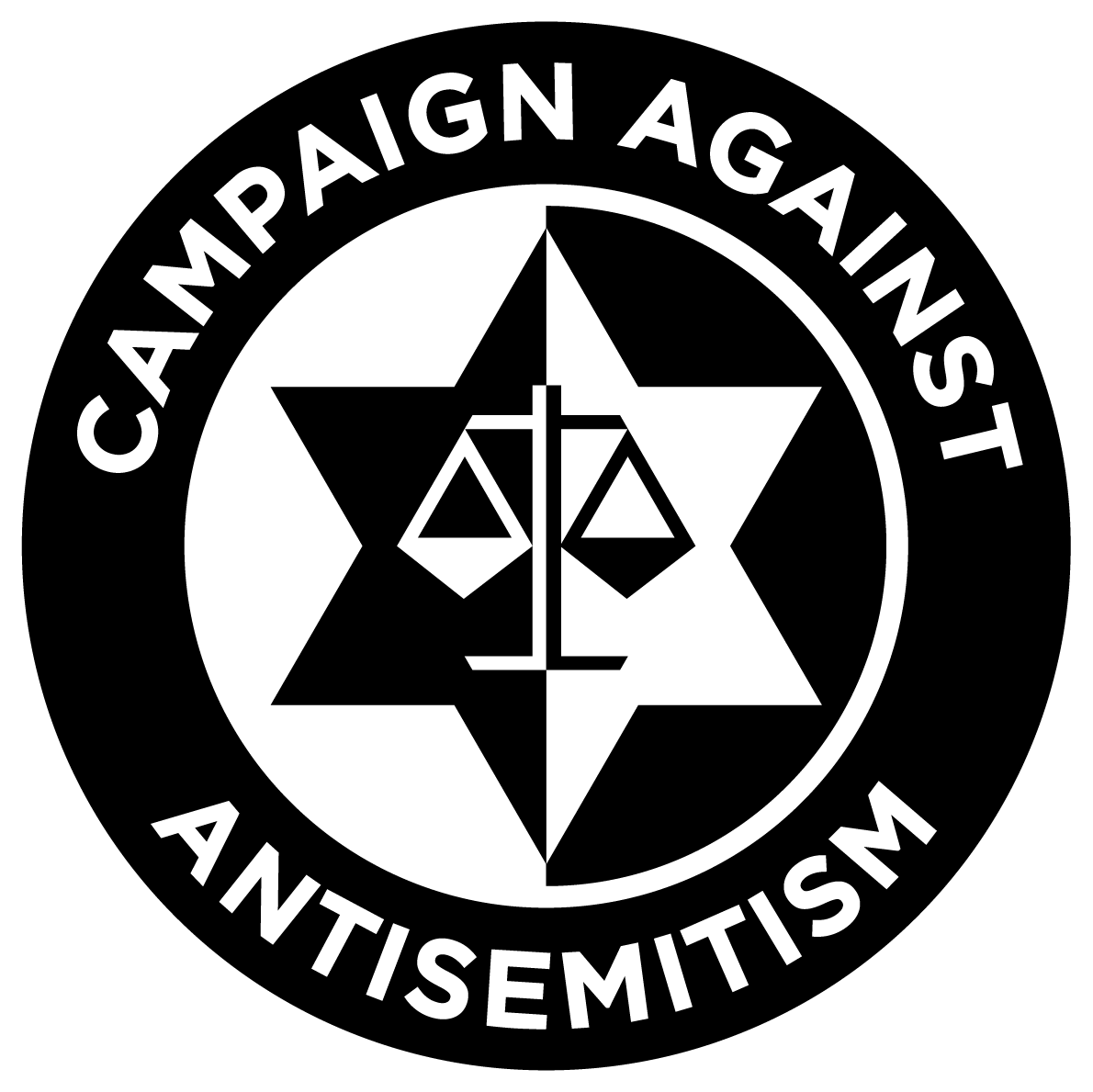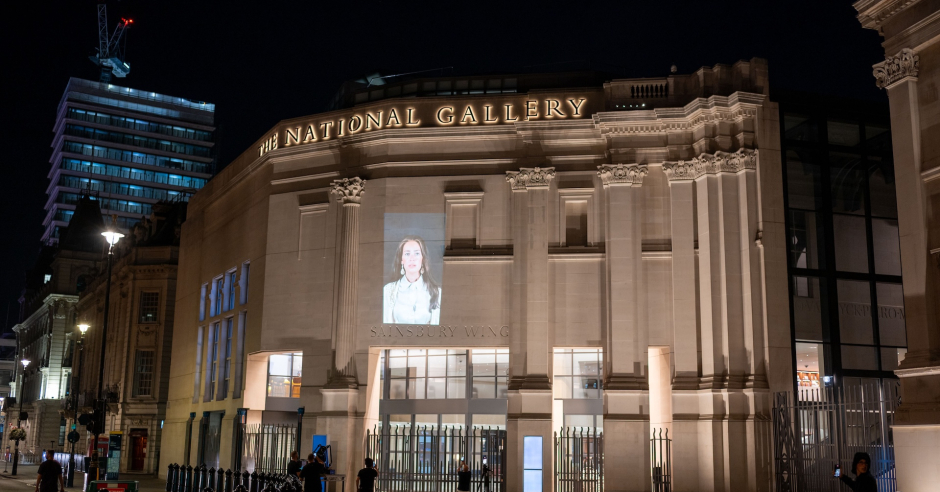CAA puts antisemitism in the arts on display
Campaign Against Antisemitism has today published a projected video of Jewish artist Sharon Rose on the National Gallery, one of the few remaining safe spaces for Jews in the arts, in Trafalgar Square.
In the projection, Ms Rose exposes the hostility that she has faced in the art world for incorporating Jewish symbolism into her work. She also talks about recent controversies in the art world relating to Jews.
In particular, she highlights:
- The National Portrait Gallery’s display of a portrait of a high-profile activist whose social media promoted a placard equating Gaza with the Holocaust and posts attacking “the Zionist regime.”
- A portrait comparing the Prime Minister of the world’s only Jewish state to Adolf Hitler, which was displayed at The Other Art Fair, presented by Saatchi Art.
- The Royal Academy’s display of someone holding a sign that misleadingly implied that most Jews are opposed to Israel.
The video ends with Ms Rose calling on people to join her at Britain’s March Against Antisemitism, organised by Campaign Against Antisemitism for Sunday 7th September.
You can watch the full video here.
A spokesperson for Campaign Against Antisemitism said: “For all that the art world boasts of celebrating diversity, its inclusivity too often does not extend to Jews. Somehow, being Jewish has been made politically controversial, as if Jewish identity were just a personal matter. While artists like Sharon Rose face pushback for expressing their heritage, some galleries have elevated works hostile to Jews, while sidelining Jewish voices.
“The National Gallery has been an exemplar within the art world, and it has become one of the few safe spaces for Jews in the arts. That is why we chose to project our image onto this iconic building: to highlight its example and to call on others to follow suit.
“We encourage everyone to join us on Britain’s March Against Antisemitism on Sunday 7th September.”
The full remarks from Sharon Rose on the projection
My name is Sharon, and I’m a British Jewish artist. My grandfather was a Holocaust survivor, and he painted too.
In my art, I’ve strived to show my Jewish pride and my opposition to antisemitism. But when antisemitism is being spread in the art world itself, my work can become daunting and isolating.
I open social media to connect with my fellow artists, but I’m met with posts they’ve shared comparing Gaza to the Holocaust, in which six million Jews were exterminated. The same Holocaust that my great-grandparents were murdered in and my grandfather survived.
I have always been open that my work is influenced by my Jewish identity, similar to Marc Chagall, weaving nostalgic biblical references into my paintings. Previously, these themes imbued my work with depth and meaning, bridging the timeless with the contemporary in a celebration of faith, memory and artistry.
These days, however, when I show my work around the world, this Jewish symbolism is often questioned as potentially controversial content. Some go as far as to say it’s too political, and ask me to submit my more abstract paintings instead, where the symbolism is more subtle and more open to interpretation.
At the same time, galleries are more than ready to feature pieces comparing the Prime Minister of Israel to Adolf Hitler, a shameless breach of the International Definition of Antisemitism.
The National Portrait Gallery, a leading institution in the British art world, proudly displayed a portrait of a controversial activist whose social media account features, among other things, a placard comparing Gaza to the Holocaust, a retweeted post about “the Zionist regime”, and the historically-revisionist claim that “Jesus was a Palestinian,” which deliberately airbrushes Jesus’ Jewish identity and the Jewish connection to Judea.
The Lakes International Comic Art Festival welcomed a cartoonist whose work includes appalling caricatures of Jewish people and the stereotypically antisemitic depictions of Jews as insects and octopuses. The Royal Academy showcased a piece whose description claimed that “Gaza draws many parallels with the Nazis.” In another entry, the Royal Academy agreed to display someone holding a sign that misleadingly implied that most Jews are opposed to the State of Israel.
The art world has become host to “vile antisemitic sentiments…that are not isolated incidents but part of a broader culture that seeks to marginalise and dehumanise Jews.”
These are the words of Candida Gertler OBE, the founder of the arts charity Outset Contemporary Art Fund, who last year announced her resignation “from all voluntary positions within UK arts institutions”.
The failure to confront such hate compromises the very essence of what art stands for — a medium of empathy, exploration and shared humanity.
When a major patron of the arts feels no other choice but to turn away from what she loves most because of the rising tide of antisemitism, this must be a wake-up call for everyone in the arts and beyond.
From musicians appearing to express support for antisemitic terrorist groups or calling for death and destruction in relation to Israel, to Jewish comedians being cancelled at the Edinburgh Fringe Festival, something has gone dangerously wrong in Britain.
This must be the moment that the country wakes up.
I encourage you to join Britain’s March Against Antisemitism on Sunday 7th September to say no to antisemitism and extremism. See you there.
Sign up now at antisemitism.org/march.
Image credit: Jeremy Coleman/Campaign Against Antisemitism



